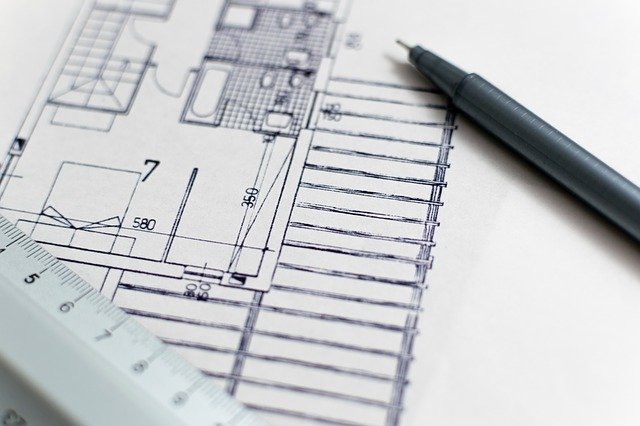When your construction business begins to experience a snowball of success, it is exciting until you realize that you have more work on your plate than you are supposed to handle by yourself. This is when you contact subcontractors who can take up the load from your shoulders and ensure the successful and timely completion of the project. As an independent contractor or a construction company, it is important to understand the role of subcontractors in the business. It is not feasible to hire a team of in-house professionals who can look after all the construction needs, from plumbing to roofing, flooring, and landscaping. Subcontractors are a more feasible option because they have the expertise, skills, and resources to complete the project from start to finish. Most importantly, subcontractors follow your orders and work as you guide them. Now, things can get a little complex at the time of paying the subcontractors. This is because subcontractors have nothing to do with the client. It is the independent contractor who pays the subcontractor.
There are several aspects to keep in mind when paying subcontractors directly. Let’s discuss each one in detail.
What are Construction Subcontracts?
Once the subcontractors are on board with the project, they are given a subcontract to sign. In some cases, a subcontract is often not completely understood or read. So, before you ask the subcontractor to sign the subcontract, ask them to thoroughly read and understand what the clauses state so that things are carried out smoothly at the time of payment. Experienced contractors and construction managers use services for managing contracts and keeping a tab of everything, such as the one offered by Bridgit Solutions.
It is vital that the subcontractor understands three clauses in subcontract agreements that could create significant risks. This is because it is the general contractor who is liable for any legal issues that happen during the job. If the client is sued, they will put the liability quotient on the contractor. So, as a contractor, advise your subcontractors to read the clauses carefully. The clauses include:
#1 Pay-if-Paid
Getting paid is the most vital part of the construction business. But what if the client does not pay you? How are you supposed to pay the subcontractors? The pay-if-paid provision states that the payment to the subcontractors by the independent contractor is contingent upon the independent contractor’s receipt of payment from the client. This means that if you, as an independent contractor, are not paid for any reason, then you are not liable to pay the subcontractor as well. The subcontractors have done their jobs perfectly and as demanded, and they are entitled to payment. Thus, it is important to make sure that the subcontractors know about this subcontract before they take up the job. Else, if, for any reason, the client refuses to pay or takes time for payment, you will get in a lot of trouble. Such clauses are typically enforceable as long as they are unambiguously and clearly stated.
#2 Flow Down
The flow down is a clause that is generally designed to protect the general contractors. As a general subcontractor, you can incorporate all your prime contract responsibilities into the subcontracts. This means that all the responsibilities, remedies, and rights in the prime contract can be applied to the subcontractor as well. In other words, the subcontractor becomes bound to you to the same extent that you are bound to the client. This ensures that the subcontractors take their responsibilities more seriously. This is an important clause to bring to the table if you want to make sure that the subcontractors take their jobs seriously, ensuring that the project completes within the given timeframe and that too successfully.
#3 Indemnification
When it comes to the construction industry, risk shifting is not new. It is most visible and quite standard in the indemnification clause in a subcontract presented by an individual contractor to the subcontractors. The indemnification clause not only has the subcontractor indemnify the engineers, contractors, client, and architect for losses and damages stemming from their own omissions or negligent acts, but many indemnification clauses also include the negligent act of the client, general contractor, and any other third parties involved in the construction project. Singing up the indemnification subcontract means that the subcontractors agree to indemnify the client and the general contractor for their own mistakes and negligence. While it doesn’t sound fair, this risk-shifting or shifting of responsibility can be enforced if clearly expressed. One of the benefits of this subcontract is that subcontractors pay extra attention to what’s happening around the construction site and ensure no mistakes are made. The same goes for general contractors as well.
Thus, as a general contractor, you need to know these clauses. Depending on the situation and circumstances, subcontractors may choose to neutralize these clauses or consider negotiation.
Make it Easy to Pay
Ask the subcontractors to make clear, correct, and complete invoices. Subcontractors need to understand that late invoices are due to inaccuracies or problems with the invoice and paperwork. Thoroughly read the invoice before making the payment to the subcontractor.
You should not only have a clear way to pay but also a reminder of exactly what job they did for the payment.
Most importantly, you need to treat the subcontractor relationship as a B2B relationship. Don’t make the mistake of considering it as an employer-employee relationship. Remember these quick tips on how to keep yourself on the right side of the law:
- Make sure that the subcontractors bring their own equipment. This is a vital aspect because you will be paying them significant amounts on the note that they bring their own equipment.
- Only hire those subcontractors who have other clients
- Avoid offering benefits
- Have a signed subcontractor agreement that defines the terms of work as well as a working relationship
- Ensure that the subcontractors know they will be responsible for their own self-employment tax
All these aspects can make the process a lot smoother and informed.





